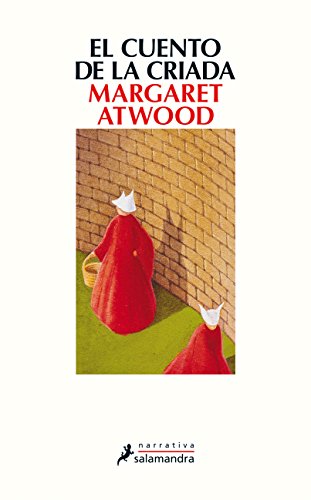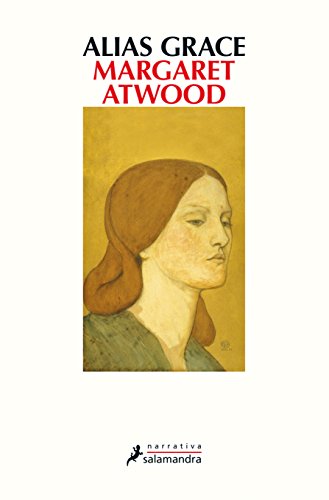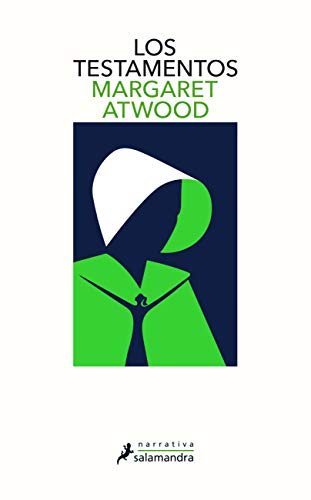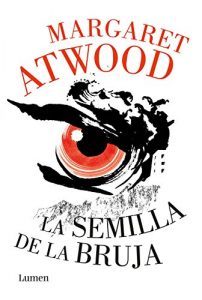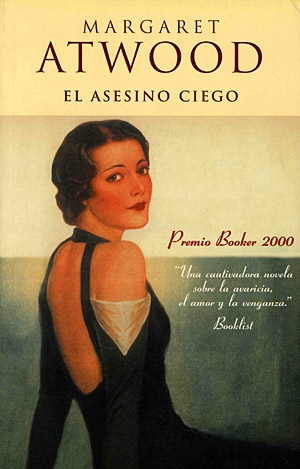Social activist and writer. The canadian Margaret Atwood alternates and combines his two activities with the same level of commitment. An author who cultivates a varied and always precious narrative, moving in line with her poetic beginnings but always avant-garde, capable of being guided by realistic plots and approaches to immediately surprise with stories of authentic science fiction.
Creative restlessness says a lot about any creator. The easy thing is the labeling, the stagnation. But in addition to the fact that in the long run, staying in a single space can be counterproductive in the face of the ballast of labels, the creative spirit itself shrinks, accommodates itself, stagnates in the same story told over and over again.
Probably her character as a social activist makes it impossible to position herself comfortably in terms of this author's narrative, always ending up surprising and making the tendency of critics and readers towards pigeonholing more difficult. That said, as always, I'm going to venture into her three recommended novels.
3 Recommended Novels by Margaret Atwood
The Handmaid's Tale
It is always exhilarating to find a science fiction plot in a renowned author. Feminism and Futurism. Dystopia and social criticism.
Summary: In The Handmaid's Tale, Margaret Atwood, Canadian author awarded the 2008 Prince of Asturias Award for Literature, the Booker Prize and other important literary awards, imagines a dictatorship inhabited by sterile women.
This fact, together with the persistence of social classes and the primacy of the male, gives rise to the consideration of women based on their reproductive possibility and, specifically, to maintain the predominance of the upper class that governs society. The Handmaid's Tale was made into a movie with great success and is certainly one of her best-known novels.
Alias Grace
Can homicide be justified?… I am not referring to an approach under the current state of our most civilized societies. It is rather a matter of looking for some kind of natural right, however remote in time, that could justify killing a fellow man. Currently we resort to the fact that hate and revenge are not feelings that can lead to morally acceptable behavior, but at some point, under the primary legislation of some basic human organization, this should have been the case, simply compensate with your own life if you have been able to cause harm...
The conflict, all conflict, is now institutionalized. Justice applies the law, the rules for each case. But justice is also subjective. And there will be those who never see that any justice of the men collectively can pay them for a damage caused. I am not making a gratuitous debate on the basis of this original book from 1996.
It is rather a matter of the great author Margaret Atwood, who knew how to turn a real testimony into the emblem of the impossible balance between true justice and morality. Grace Marks, at her tender 16 years old, has been sentenced to life imprisonment. The year is 1843 and the official Justice is already armed enough to find the punishment in Grace's life imprisonment. But she had already taken her own justice. The one her heart dictated.
Perhaps it is a visceral murderer, unscrupulous, affected by some psychopathy ... Only years later, Dr. Simon Jordan approaches Grace in search of answers. The girl can get a pardon. That's what some new loobys are up to, to remove the label of perpetual punishment for the girl so they can grant her a second chance. Everything will depend on what she may want to communicate. How sorry I am. From her presence before the world as a mature woman and far from the demons that could possess her ...
But what Simon Jordan begins to discover turns everything upside down. Perhaps Grace could never tell the truth. Perhaps he told it and they did not want to listen to it ... A disturbing truth will make its way through the mediation of Dr. Simon Jordan. And the foundations of society will shake to the sound of an earthquake for consciences.
Wills
Clearly Margaret Atwood it has become a mass icon of the most vindictive feminism. Mainly because of his dystopia from The Handmaid's Tale. And it is that several decades after the novel was written, its introduction to television achieved that unexpected effect of the delayed echo.
Of course, the opportunity paints her bald to consider a second part. And surely also the inalienable suggestions for a continuation in the handwriting of the great maker of history. The question is to get it right and save that hackneyed criticism that the second parts are never good. Something more typical of nostalgic clinging to the original work with a vocation for summary criticism of any sequel.
The purely narrative part leads us more than a decade after the original story. The Republic of Gilead continues to dictate norms, behaviors, beliefs, duties, obligations and very few rights for subjugated citizens and, above all, female citizens.
Under fear, abuse continues to be allowed, although attempts at insurgency, especially from women, much more affected by the sinister government, are growing in growing pockets towards an announced decline of Gilead. There where there are women capable of discerning, between the latticework of fear, their strongest will can harbor hope.
Of course, the three women that make up the singular triangle, coming from very different social strata; from the most favored, privileged and compromised with the regime, to the most insurgent and even bellicose, they will rally to end up facing all kinds of conflicts, including with themselves.
Among the three, Lydia mainly stands out with her dichotomous role between the prevailing morality and the more humanistic ethics that serves to draw that mystery about what may finally happen before Gilead is only a vague memory of the worst, something that can always to become, the final moral of all dystopia with sediment.
Other books by Margaret Atwood ...
The witch's seed
The best thing about Margaret Atwood is that, regardless of assuming a literary quality in her own right, she will always end up surprising you in the plot or in the form. Innovative about her own work, Margaret reinvents herself with each new book.
En the witch's seed we enter the skin of Felix, a volunteer dedicated to the cause of recovering inmates through the theater.
Nothing better than Shakespeare and nothing better than The Tempest for those "losers" to discover the Caliban inside them but also the Ariel. Neither Caliban was that bad nor can Ariel end up being happy in his utter servility. They are two antagonistic characters in Shakespeare's great work, do you remember? One son of the witch Sycorax and the other one condemned by the same and finally made a slave by Prospero.
Felix wants to seek synthesis, the best of mixtures for those prisoners to seek balance in their humanity without giving up in their rebellion as a defense instinct, as a need for change.
Our actions, the actions of those who ended up with their bones in jail can always lead to guilt and conviction. And not always the deprivations of liberty or the most severe sentences are found in prison wards ...
The preparation of the play to be performed by the inmates, for which Félix gives himself, is also a rehearsal of what their interpreters are and what they have left behind, of opportunities, revenge and conscience.
Life is a paradox, a contradiction. When you can eat the world you have no idea where to start, when you could, we are unappetizing. We end up consuming ourselves like this in hollow materialism. Now and already in the times of Shakespeare ...
But Professor Felix's inmates are going to learn a lesson taught by themselves. The discovery of being, of the inner forum, of the battle between good and evil can only lead to inner peace.
But no one is free to relapse into the bloodiest mood of revenge, not even Professor Felix himself ...
The blind assassin
A story within a story. The dire events that emerge from the main narrative give rise to a kind of introspection for new characters. Around the ill-fated Laura we get to know her closest people. Stories that converge but that do not participate in the same destiny are thus woven together.
Shared experiences do not have to define two different people. It is already known that someone's heaven can be someone else's hell. While we advance in the intimate approach, we enter the author's own Canada, a country that was not far less affected in the interwar period.
Summary: Shortly after World War II has come to an end, a car falls off a bridge and a young woman named Laura passes away. Despite the fact that the tragic event is sold to the public opinion as a traffic accident given the importance of the family name of the deceased, in all probability it is a suicide.
Some time later, her sister Iris recalls their childhood in the convulsive Canada between the wars and reconstructs the history of the rich dynasty to which they belong, marked by dark and murky episodes. Within Margaret Atwood's novel there is another novel written by one of the protagonists, which in turn contains another narrative.

